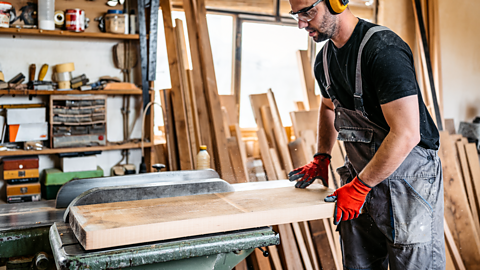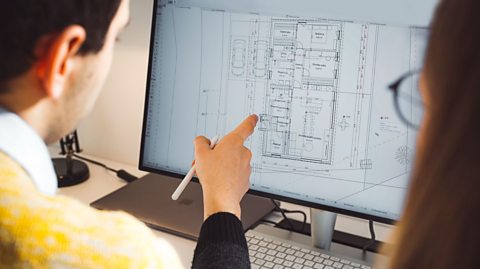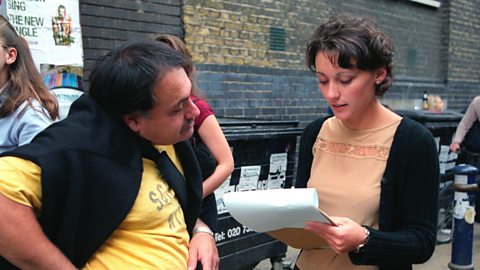Key points
- Identifying design opportunities involves spotting problems or needs that can be improved through design
- A design brief clearly describes the problem, goals, and specific requirements of the project
- Research involves gathering information on similar products, useful materials, and market needs
- Analysing existing products helps understand what works well and what does not
- A design specification lists criteria for the product, including form, function, and sustainability
This section is relevant for students embarking on their design and manufacturing project and pursuing Option C: Product Design pathway.
Design thinking, analysis and specification
How to identify a design opportunity
Identifying design opportunities is about spotting problems or needs that can be fixed or improved through design. It is looking at everyday things and asking, 'What could work better?' or 'What is missing?' This step helps you figure out what your design needs to do and sets you up to come up with creative ideas that solve the problem or make life easier.
How to complete a design brief
A design brief is a clear description of the problem or need that your design project aims to solve. It explains what the product should do, who it is for and any specific requirements or limitations (like size, materials or budget).The design brief guides your entire project by setting clear goals and ensuring your design meets the needs of the user or client. It is like a roadmap for your project, helping you stay on track from start to finish. Start with a comment like 'I plan to design and manufacture…'
How to do your research
Research and analysis is all about gathering information to help you solve the design problem.
First, you need to research anything related to the problem you are working on — this could include products that are similar to the one you want to create, materials or technologies that might be useful. Analyse existing products to see what works well and what does not, and consider market needs to understand what people want or need from a product like yours. This research helps you make informed decisions and come up with the best solution.
How to research existing products
It is important for designers to know what is currently available on the market from theirmarket competitorAnother producer who sells similar products.. It is valuable for them to know what is already out there, the varying functions, differing prices and customer opinions.
Questions to consider:
- Who are the competitors and what products do they already sell?
- What are the current trends?
- What are the price variations? Are they value for money?
- Which products are good and which are bad? What could be done to make a new product different and better?
- What are the responses from customer reviews?
- What other products could influence the prototype? Designers may take inspiration from the mechanisms of one product and introduce it into the product that they are designing.
- What materials, components and fixings have been used? A product product disassemblyTaking a product apart to see the components, fixings and parts used to make it. could be beneficial to explore the components inside.
- What have designers done in the past that was successful or unsuccessful?

Existing products can be viewed online; however, looking and physically handling products enables designers to experience the products as users would, which is valuable for the iterative designA cyclic design process of modelling and testing to achieve gradual improvements to the design. process. These findings can be used to inform the design specification.
Designers and design companies
It can sometimes be helpful to look wider than direct competitors. There are a variety of past and present designers and design companies who have become known for a particular style or approach to design.
Creating your design brief and specification
A design brief is a short statement that identifies what a designer plans to do, for whom, where it should be used and why they have decided to follow this route - for example, ‘to design a workspace for a teenager’s bedroom to encourage them to revise and help them to achieve top marks in their exams’.
Creating and working with design specifications and design briefs
This is Piers. Piers understands that producing a design specification is key to designing products that are fit for purpose and actually useful to other people. So how do we avoid making something that's totally pointless? When you design, the end product needs to be fit for purpose. So to ensure this, designers produce a design specification.
Which is a statement that tells a designer exactly what the product has to do and what the requirements are. It's directly influenced by research and analysis. A design spec should include form, function, user and performance requirements, and also material requirements. It should also include scale of production, cost, and sustainability.
So when we designed the skate park, the two most demanding requirements were the spatial constraints and the limitations of an axis. These two dictated how the park would be made and installed. In terms of functionality, the design specification called for a layout that would work for a wide range of purposes and uses, from international competitions to coaching primary school children.
Exactly. And in addition to producing the specification, you also need to draw out your plan, right? Freehand sketching is used as a preliminary way to show the basic composition of the design, quickly evaluate layout choices, and explore concepts. Like these. Formal drawings give more information about the structure, dimensions, components, materials, and assembly instructions. These have to be presented in a clear way. An example of a type of formal drawing style is also graphic projection. This involves drawing out each side of your design in a 2D form, so you see a front view, a side view, and a plan view.
So producing a design spec basically means outlining the exact requirements for the design. So we know it will work.
A design specification is a list of criteria your product needs to address. Using the design brief as a starting point for research, a specification can be written when more facts are known. Information needs to be found through research.
The statements need to be technical, measurable and justified as this then allows them to be used to evaluate the success of the prototype as it is being designed, developed and manufactured through the design process.
Consider the following when creating a specification point:
- Make a statement that the product must do.
- Back it up with numerical data (measurements, quantity etc).
- Justify why points 1 and 2 are important to the product.
Example: ‘The product must fold away to fit in the cupboard underneath a bedside cabinet (540 mm × 400 mm × 450mm) so that it can be stored easily in the customer’s compact and cluttered room.’
This statement has been produced from research into the average dimensionsSizes and measurements. of a bedside cabinet, it can be used to easily test the prototypeThe first working model of a design used for testing, development and evaluation. developed later, and it is justified, providing reasons about why it is important to the user.
Design specifications should consider:
- form - the way that something looks, also called aestheticHow something looks
- function - what the product will do
- user requirements - what the user needs from the product
- performance requirements
- material and component requirements - what the product should be made from and the components needed to ensure it functions correctly
- scale of production - how the product is to be manufactured
- cost - affordability, value and profit margins
- maintenance - how the product will be maintained to ensure continued use
- sustainability - minimising the impact on the environment
Further study
Manufacturing practices. revision-guideManufacturing practices
Brush up on manufacturing and planning

Design and innovation. revision-guideDesign and innovation
Learn more about design and innovation

How to market your product. revision-guideHow to market your product
Learn more about market research

Test yourself
More on Product design pathway
Find out more by working through a topic